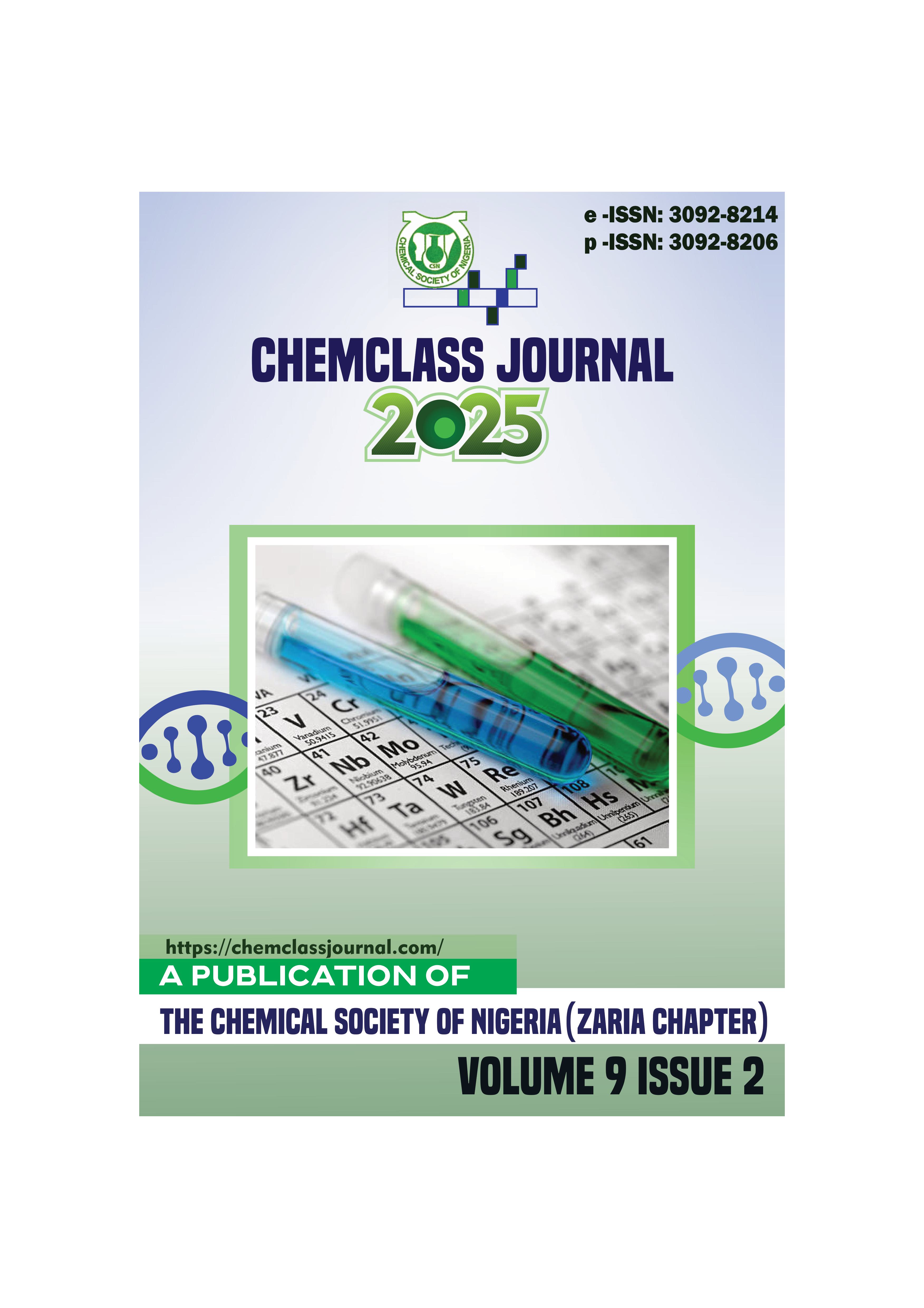Assessment of the Climatic Conditions and Health Risk of Potentially Toxic Elements in Ambient Air of Port Harcourt, Rivers State, Nigeria
DOI:
https://doi.org/10.33003/chemclass-2025-0902/200Keywords:
Assessment, Potential toxic elements, Health risk, Inhalation, Climate, Weather, Port HarcourtAbstract
Air pollution has become a global phenomenon and of great concern. This study investigated the influence
of climatic conditions on potentially toxic elements (PTEs – Ni, Cd, As, Cr, Pb) and the associated health
risks posed by the elements in selected locations within Port Harcourt, Nigeria. The research spanned from
September 2014 to February 2025 covering both dry and wet season and focused on Eleme-Akpajo, Trans
Amadi and GRA-Port Harcourt serving as a control location. Meteorological factors (Temperature, wind
speed, relative humidity and wind direction) and PTEs were measured at geolocated stations using air 4250
Kestrel weather trackers and Kanomax 3900 portable counter high volume sampler and Atomic absorption
spectrophotometer respectively based on ASTM D1971/4691 standard method. The results indicated that
the industrial areas had significantly higher PTE concentrations (P < 0.05), influenced by climate conditions
and anthropogenic activities, posing serious health concerns. Eleme-Akpajo showed the high average
temperature (34.68°C dry season) and correspondingly elevated PTEs concentrations. Average
concentrations of Pb, Cd, and Cr exceeded WHO ambient air quality standards in Eleme-Akpajo and Trans
Amadi, particularly during the dry season. There were extremely high EF values for Cadmium in both
locations, particularly at Eleme-Akpajo (EF > 3000 in wet season), indicating significant anthropogenic
input. Lead and Arsenic also showed elevated EF values above 10, particularly in the wet season, signifying
non-crustal sources. Chromium, on the other hand, consistently recorded EF < 1 in both sites and seasons,
suggesting a natural origin (crustal). Non-Carcinogenic Risk revealed that HQ for children and adults was
>1 in Eleme-Akpajo and Trans-Amadi, indicating a potential for adverse health effects. Cd and Pb were the
major contributors. Carcinogenic Risks, CR values for Cr and Cd ranged from 1.2 × 10⁻⁴ to 3.4 × 10⁻⁴ in
Eleme-Akpajo, exceeding the acceptable limit. GRA recorded CR values below 10⁻⁵, posing negligible risk.
At Eleme-Akpajo, all PTEs loaded equally and positively on PC1, suggesting a strong shared source, most
likely industrial emissions. At Trans-Amadi, although PC1 still captured all the variance, the more varied
loading patterns indicate the possibility of multiple, less uniformly distributed sources. The nearly equal
and opposite values of PC2 at both sites reflect minor influence or variability across the sample matrix, but
do not significantly. Continuous monitoring, pollution control, and policy interventions are essential to
mitigate environmental health hazards in the city.





 ChemClass Journal
ChemClass Journal
